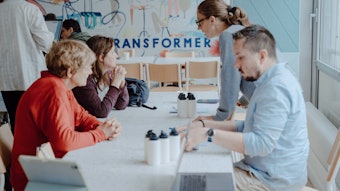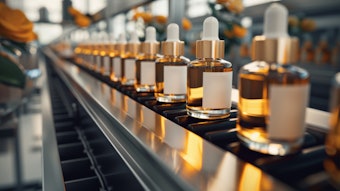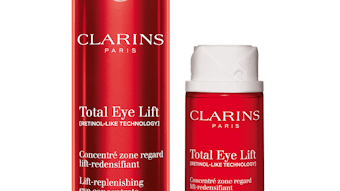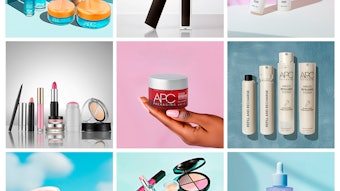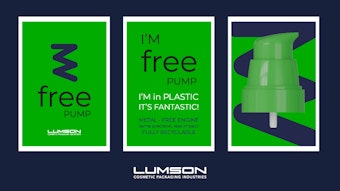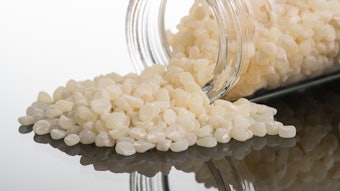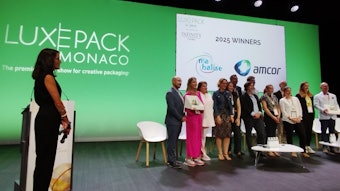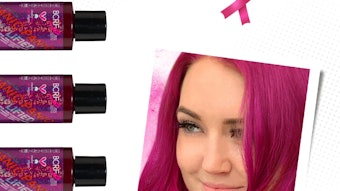- A study from packaging supplier MWV found 78% of U.S. consumers stated getting all of the product out is extremely or very important with regard to overall product satisfaction.
- Beauty brands and suppliers are innovating more ways to help consumers use every last bit of a product—including developing new tools, using new materials and revamping standbys such as airless and atmospheric packaging.
Finding a beauty product that works can be consumer’s dream come true—which means when they can’t get all that product out, it can be a nightmare. Thus, this has been an issue that beauty brands and packaging suppliers have been keen to address. “This has really always been the holy grail of packaging—a package that enables the consumer to get that last drop out,” says Kristy Hooper, beauty and personal care global strategy and marketing manager, MWV.
Consumers Want It All
Leaving product behind in a package because they can’t get to it is often high on the list of consumer complaints about beauty products. According to Hooper, “In the ‘Packaging Matters’ study MWV did, our survey found that 78% of all U.S. consumers state that getting all of the product out is extremely or very important with regard to overall product satisfaction. And this is ranked by U.S. consumers as one of the top three most important packaging attributes. The only two [concerns that ranked higher] were keeping the product fresh and effective and protecting the product from spilling or breaking. So it’s hugely important to consumers.”
Adding her thoughts, Virginia Lee, senior analyst, Euromonitor International, notes, “I think when one cannot get every single drop out of [a bottle], it is a source of frustration. People who are paying $30–50 for foundation want those last few drops.” But she also points out the barriers in getting consumers to try other packaging types. “We’re still so ingrained in expecting foundation in bottles,” she says.
That means it is on the beauty brands and packaging suppliers to figure out the best ways to offer consumers what they want. “With more money being spent on beauty products, it’s important to satisfy the consumers need for added value. Though products may differ in price, consumers still look for optimum performance from their products, including the packaging,” says Julianna Keklik, marketing manager, NA beauty, Aptar Beauty + Home.
Hooper notes, “I think how strongly [consumers] feel about it is very price point driven.” However, she also notes, “Specifically to skin care, I think the consumer experience has become so incredibly important. The overall experience that you have with a package is really your connection to that brand. And if the experience is a good one, then you have more loyalty to that brand. Whereas if part of that experience is negative—such as feeling like you didn’t get the full value for the package that you bought—then that can have a negative connotation to whether or not you are going to buy it again, whether or not you trust that brand, and whether you want to continue using that type of product.”
That experience between a consumer and product includes many elements. “Consumers tend to associate efficiency of the cream with its viscosity. The highest [equals] the best,” says Eric Desmaris, director of business development, Mega Airless. To address viscosity needs, he explains, “Airless dispensers are clearly high viscosity delivery systems. On regular non-airless dispensers, the cream will stick on the walls and also create a cavitation, which [can] block atmospheric pumps.”
Carole Grassi, marketing director, dispensing, Albéa, shares, “Evacuation rate is an important matter for our customers. This is a concern particularly for highly viscous formulas. The best pack type used for a perfect evacuation is the airless pack—a 98% rate.” And she adds, “Any function that shows the level of the formula inside or ensures the consumers 100% consumption is a plus for a product.”
In addressing packaging design needs, obviously a lot of factors—materials, costs, development time and so on—come into play. But it’s about balancing those needs with what the consumer will want. “At Fusion Packaging, much of the design and engineering that goes into our packages focuses on usability and the end consumer’s experience, and a major part of that is ensuring they are able to get out all of the product in our packages,” says Jessica Cahalen, director of marketing, Fusion Packaging. “From a marketing perspective, studies have shown that this is a key want for consumers, and it results in cost-savings because they are not wasting product. This also brings credibility to the brand, because it shows that they want to provide more value with their products.”
Removal Options
“One source of frustration we often encounter in our research is when consumers have to come up with creative ‘shortcuts’ to get out every last bit of product from a package,” shares Cahalen. And beauty brands have addressed this challenge in several ways. For example, Cargo Cosmetics offers its foundation in a pouch-like package. “Our foundation originally launched in a glass bottle, but we were looking for something more lightweight and easy to use,” explains Fiona Baptiste, senior sales and merchandising director, Cargo Cosmetics. “The inspiration for the Liquid Foundation pouch came from seeing a child consuming a juice in a pouch. You could see the pouch itself decrease as the product was being consumed.”
Keisha Wright, founder and CEO of Swoon, found innovation to be key to the development of the Swoon spoon/applicator, a beauty tool that reaches for that last bit of lip gloss. “The original idea came about when I was on a trip in Aruba with four of my girlfriends. We were getting ready to go out and I was down to my last bit of gloss, and it was my favorite Bobbi Brown color,” she describes. “My girlfriend came out, and she saw me using a bobby pin to get to the last bit, because it’s a significant amount [left]. It’s like 20%, and I calculate that to be about $5 worth. So I was digging with this bobby pin, and she said, ‘Oh, I hate when that happens,’ noting the girl at the Bobbi Brown counter taught her how to remove the stopper [to get to the last bit].”
After learning how messy and potentially dangerous the stopper removal technique could be though, Wright felt there had to be a better way. “I reached out to my current business partner, a mechanical engineer by trade.” Thus Wright and her partner developed the Swoon tool to address one of the biggest “beauty bothers,” as Wright calls it, which is now available in retailers such as Sephora and HauteLook.
Of course, one of the biggest packaging options for products looking to get the last bit out is airless, which is offered by companies like Mega Airless, Albéa, Fusion Packaging and Aptar Beauty + Home. Aptar’s Keklik notes, “Airless packaging has multiple benefits that work together to enhance the consumer experience. Along with excellent evacuation and getting all the product out, the consumer experiences a package that is easy to use and that protects their beauty investment.”
Fusion Packaging’s Cahalen points out the visual potentials for airless packaging. “For example, our single-walled polypropylene Lift and Eclipse collections include mini, slim, standard and jumbo sizes that are all highly customizable for decoration while still maintaining a uniform aesthetic,” she explains, and Grassi shares, “Albéa’s Tubes+pumps solution are visually transparent bottles that allow the consumers to see the formula.”
For beauty brands that don’t want to go the airless route, there are other options too. “For our Aria dispenser, for example, we can change out the dip tube to be a flexible tube material that can curve down to the bottom of the bottle,” explains Hooper. “We can also change the cut of the tube—and that can, in many cases, enable an atmospheric pump to get more product out versus a standard straight-cut dip tube.”
Good to the Last Drop
Work will continue in figuring out how to get consumers every bit of product out of the packaging, and beauty brands and packaging suppliers will be at the forefront of that development. “Mega is constantly interfacing with brands and consumers to determine the market demand and then applying creative engineering to design the best solutions,” says Desmaris. “We follow the latest evolutions of creams and with new consumers’ behavior.”
Keklik shares her expectations for this category, saying, “Moving forward, we may see a progression toward no waste of the product overall. With the continued green efforts across the globe, it wouldn’t be far-fetched to see eco-friendly packaging appeal to consumers as added value,” while Grassi points out the continuing need for refinement. “Product evacuation will continue to be a factor for end-users, along with ergonomics and formula protection and dosage precision,” she says.
Whatever the path forward, consumers will continue to want all they can get of their beauty products, so it is up to you to figure out the best way to get it to them.


